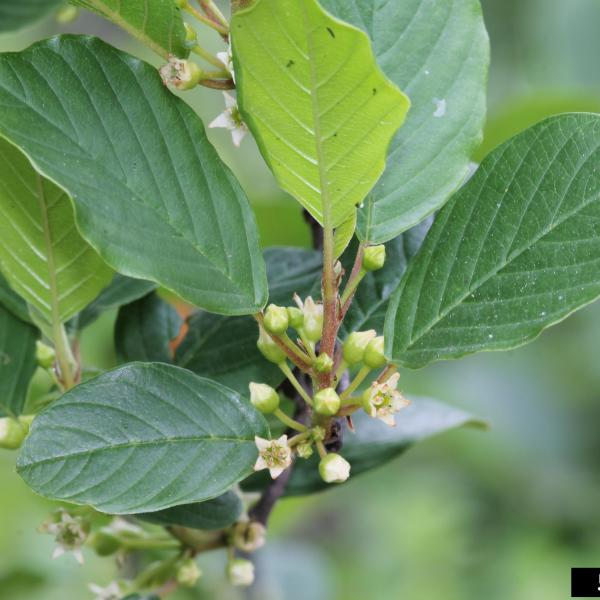
News Source
"DURHAM — After fighting the invasive glossy buckthorn for decades, Tom Lee, University of New Hampshire associate professor of forest ecology and NH Agricultural Experiment Station researcher, and Steve Eisenhaure, UNH Office of Woodlands and Natural Areas land use coordinator, have planted an entire orchard of the shrub at UNH's Kingman Farm.
Using this orchard, their team is looking to study characteristics of the invasive species under controlled conditions, free from competition with other plants and from variation in environmental factors like soil or micro-climate.
They also will test, under rigorously controlled conditions, the effect of competition from glossy buckthorn on seedlings of the eastern white pine and determine the impact of manual cutting of glossy buckthorn of different ages on buckthorn growth and survival.
“We have very little information on the life history characteristics of glossy buckthorn ... (including) age of first flowering, seasonal time of flowering and fruiting, height and stem diameter growth by year and time of year. This is basic information that we require to better understand and manage the plant. All of our data so far are from field sites where buckthorn is growing with different plant species, on different soils, and where sites have different histories. It’s tough to disentangle all those variables and their effects on buckthorn. The orchard removes a lot of that variation and allows us to observe buckthorn in an unfettered condition,” Lee said.
The glossy buckthorn largely effects economically significant hardwood forests like the eastern white pine. According to the North East State Foresters Association, the annual value of sales of New Hampshire’s forest products industry totals nearly $1.4 billion. When a tree canopy of white pines is opened up, such as after logging, glossy buckthorn can take over an area in just a few years.
“While we have studied buckthorn effects on native trees in the field, once again we have to deal with a lot of natural variability ... with the controlled conditions of the orchard, we should be able to make more precise statements about the effects of buckthorn on white pine growth and survival,” Lee said.
The three main methods to control glossy buckthorn are: herbicides, manual cutting, and manual removal. Lee and Eisenhaure have experimented with manually cutting buckthorn to control it. They have found that cutting plants at the base liberates the native plants with which they compete. They hypothesize that cutting will be more successful, and might kill young buckthorn shrubs.
The team will also examine if they can inhibit buckthorn invasion by planting mixes of other species like grass turfs or by compacting soils.
“Control of these creatures is very difficult and very expensive. The key to invasive control is early detection and rapid response. You should know your land, know your forest, know where those invasives are coming in, and get them out of there. If you let them linger, you are toast,” Lee said."
Article Credit: Nicole Anderson, nanderson@seacoastonline.com
Photo Credit: R. Routledge, glossy buckthorn, http://www.forestryimages.org/browse/detail.cfm?imgnum=5473226